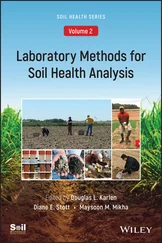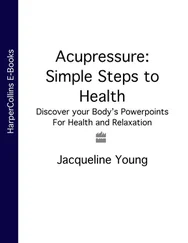Soil Health Analysis, Set
Здесь есть возможность читать онлайн «Soil Health Analysis, Set» — ознакомительный отрывок электронной книги совершенно бесплатно, а после прочтения отрывка купить полную версию. В некоторых случаях можно слушать аудио, скачать через торрент в формате fb2 и присутствует краткое содержание. Жанр: unrecognised, на английском языке. Описание произведения, (предисловие) а так же отзывы посетителей доступны на портале библиотеки ЛибКат.
- Название:Soil Health Analysis, Set
- Автор:
- Жанр:
- Год:неизвестен
- ISBN:нет данных
- Рейтинг книги:3 / 5. Голосов: 1
-
Избранное:Добавить в избранное
- Отзывы:
-
Ваша оценка:
- 60
- 1
- 2
- 3
- 4
- 5
Soil Health Analysis, Set: краткое содержание, описание и аннотация
Предлагаем к чтению аннотацию, описание, краткое содержание или предисловие (зависит от того, что написал сам автор книги «Soil Health Analysis, Set»). Если вы не нашли необходимую информацию о книге — напишите в комментариях, мы постараемся отыскать её.
Soil Health Analysis, Set — читать онлайн ознакомительный отрывок
Ниже представлен текст книги, разбитый по страницам. Система сохранения места последней прочитанной страницы, позволяет с удобством читать онлайн бесплатно книгу «Soil Health Analysis, Set», без необходимости каждый раз заново искать на чём Вы остановились. Поставьте закладку, и сможете в любой момент перейти на страницу, на которой закончили чтение.
Интервал:
Закладка:
Globally, soil health research and technology transfer activities have continued emphasizing:
1 Better soil biological indicators (Stott et al., 2010; Lehman et al., 2015; De et al., 2020)
2 New scoring functions for the SMAF (Wienhold et al., 2009)
3 Commercial availability of CASH (Moebius‐Clune et al., 2016)
4 Development of Visual Evaluation of Soil Structure (VESS) techniques (Cherubin et al., 2017; Ball, 2018)
5 Use of least limiting water range (LLWR) to assess soil physical effects (Benjamin and Karlen, 2015)
6 Use of the SMAF or a replacement framework for national (Stott et al., 2011; Karlen et al., 2014b; Veum et al., 2015; Zobeck et al., 2015; Hammac et al., 2016; Ippolito, 2017) and/or international (Fernandez‐Ugale et al., 2009; Imaz et al., 2010; Cherubin et al., 2016; Apesteguía et al., 2017) assessments of soil management practices and
7 Use of normalized soil health recovery score (SHRS) to determine which topographic position (e.g., shoulder‐, back‐, foot‐ and toe‐slope) exhibited the greatest improvement in soil health under CRP (De et al., 2020).
Other developments have included adoption of the Soil Conditioning Index (SCI) by the NRCS as a tool to assess effectiveness of various conservation programs (Soil Quality Institute, 2003). Meanwhile, in Australia the National Soil Research, Development and Extension Strategy identified “soil security” as the foundation for current and future productivity and profitability of agriculture in that country (Koch et al., 2015). Closely paralleling soil health, soil security is to be secured through agricultural land management practices that are matched to the functional capability of a specific soil resource using management practices that improve and maintain soil condition.
Many soil health studies in the United States and other countries during the early 2000s focused on SOM because of its effect on several key biological, chemical, and physical attributes of soil. This included quantifying effects of corn stover harvest (Johnson et al., 2014), biochar amendments (Laird et al., 2010), soil structure and strength characteristics on sloping lands (De et al., 2014), and soil organic carbon (SOC) measurement protocols (Davis et al., 2018). Strategies for placing an economic value on SOM were also explored (Sparling et al., 2006).
An important outcome of continued steady research on soil health indicators was an increased awareness by the private sector that vaulted soil health back into the limelight through programs such as the Soil Renaissance ( https://www.farmfoundation.org/projects/the‐soil‐renaissance‐knowledge‐to‐sustain‐earths‐most‐valuable‐asset‐1873‐d1/(verified 30 June 2020) and international actions such as the French Government’s launch of the “4 per 1000: Soils for Food Security and Climate Initiative” ( http://www.regenerationinternational.org/4p1000; verified 30 June 2020).
The Soil Renaissance defined soil health as “the continued capacity of the soil to function as a vital living ecosystem that sustains plants, animals and humans.” Their vision, that “improving soil health is the cornerstone of land use management decisions” fostered their mission which was to “reawaken the public to the importance of soil health for enhancing healthy, profitable and sustainable natural resource systems.” Meanwhile, the 4 per 1000 declaration sought to: (i) strengthen public policies, tools and actions to support an inclusive and sustainable agricultural development that fosters implementation of farming practices that maintain or enhance carbon in agricultural soils, (ii) mobilize research programs to improve knowledge on soil‐carbon storage, assess performance of farming practices and provide science‐based evidence to public leaders, and (iii) share our experiences and results, especially science evidence, through a common platform and to regularly organize exchange and stock‐taking meetings.
Other developments during the second decade of the 21 stCentury included formation of the: Soil Health Division (SHD) by the NRCS; Soil Health Institute (SHI) to sustain public/private efforts identified through the Soil Renaissance program; and the Soil Health Partnership (SHP) funded initially by National Corn Growers Association (NCGA), Nature Conservancy (TNC), Monsanto, Walton Family Foundation and more recently the Midwest Row Crop Collaborative, General Mills and many other entities. Without question, the concept of soil health has become wide‐spread and has diverse support from a multitude of public and private sectors. Leveraged by this support public and private university soil health programs, non‐governmental organization (NGO) soil health activities, a Soil Health Advisory Council associated with the Foundation for Food and Agricultural Research (FFAR), and numerous other groups, soil health has indeed evolved to where it is indeed in the daily vernacular of people around the world.
Perhaps 2500 years after Plato’s warning that poor soil management threatens humankind, we may now be ready to embrace soil health as a foundation for healthy landscapes, healthy communities, and to indeed recognize that as Dr. Larson stated many times: Soil is “the thin layer covering the planet that stands between us and starvation”
References
1 Acea, M. J., Moore, C. R., and Alexander, M. (1988). Survival and growth of bacteria introduced into soil. Soil Biology and Biochemistry 20, 509–515.
2 Acton, D. F., and Gregorich, L. J. (Eds.). (1995). The health of our soils – Toward sustainable agriculture in Canada. Ottawa, Ontario: Agriculture and Agri‐Food Canada, Center for Land and Biological Resources Research.
3 Alexander, M. (1961). Introduction to soil microbiology. Hoboken, NJ: John Wiley and Sons.
4 Alexander, M. (1980). Effects of acidity on microorganisms and microbial processes in soil. In T. C. Hutchinson and M. Havas (Eds.), (pp. 363–374). Boston, MA: Springer.
5 Allen, A. W., and Vandever, M. W. (2012). Conservation Reserve Program (CRP) contributions to wildlife habitat, management issues, challenges and policy choices: An annotated bibliography. USGS Scientific Investigations Report 2012‐5066. Reston, VA: USGS.
6 Allison, F. E. (1968). Soil aggregation: Some facts and fallacies as seen by a microbiologist. Soil Science 106, 136–143.
7 Allison, F. E. (1973). Soil organic matter and its role in crop production. New York: Elsevier Scientific Publication Company.
8 Andrews, S. S., Karlen, D. L., and Cambardella, C. A. (2004). The soil management assessment framework: A quantitative soil quality evaluation method. Soil Science Society of America Journal 68, 1945–1962. doi:10.2136/sssaj2004.1945
9 Apesteguía, M., Virto, I., Orcaray, L., Bescansa, P., Enrique, A., Imaz, M. J., and Karlen, D. L. (2017). Tillage effects on soil quality after three years of irrigation in northern Spain. Sustainability 9, 1476–1496. doi:10.3390/su9081476
10 Arshad, M. A., and Coen, G. M. (1992). Characterization of soil quality: Physical and chemical criteria. American Journal of Alternative Agriculture 7, 25–31.
11 Aslam, T., Choudhary, M. A., and Saggar, S. (1999). Tillage impacts on soil microbial biomass C, N and P, earthworms and agronomy after two years of cropping following permanent pasture in New Zealand. Soil and Tillage Research 51, 103–111.
12 Baer, S. G., Kitchen, D. J., Blair, J. M., and Rice, C.W. (2002). Changes in ecosystem structure and function along a chronosequence of restored grasslands. Ecological Applications 12, 1688–1701.
13 Ball, B. (2018). Visual evaluation of soil structure. Edinburgh: SRUC. http://www.sruc.ac.uk/info/120625/visual_evaluation_of_soil_structure(verified 12 June 2020)
14 Blevins, R. L., Smith, M. S., Thomas, G. W., and Frye, W. W. (1983). Influence of conservation tillage on soil properties. Journal of Soil and Water Conservation 38, 301–305.
Читать дальшеИнтервал:
Закладка:
Похожие книги на «Soil Health Analysis, Set»
Представляем Вашему вниманию похожие книги на «Soil Health Analysis, Set» списком для выбора. Мы отобрали схожую по названию и смыслу литературу в надежде предоставить читателям больше вариантов отыскать новые, интересные, ещё непрочитанные произведения.
Обсуждение, отзывы о книге «Soil Health Analysis, Set» и просто собственные мнения читателей. Оставьте ваши комментарии, напишите, что Вы думаете о произведении, его смысле или главных героях. Укажите что конкретно понравилось, а что нет, и почему Вы так считаете.












